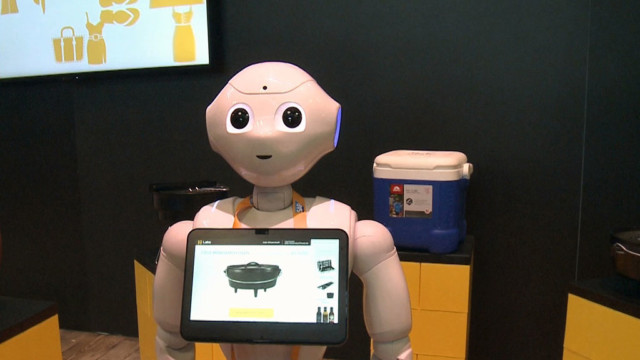The National Retail Federation’s “Big Show” in New York features some of the biggest names in tech – a clear indication that the future of retail lies with technology.
CGTN’s Karina Huber reports.
When entering a store, you might soon be greeted by Pepper, a human-facing robot, that can help you find what you’re looking for.
Robots won’t only interact with customers. They’ll also handle other tasks like managing inventory.
Virtual reality is expected to be a big part of the retail experience – allowing you to explore a store remotely and look at items up close.
But augmented reality has really grabbed the imagination of retailers.
“The average consumer uses their phone 150 times a day so if you’ve got augmented reality,” Cristina Ceresoli, senior VP retail strategy for NRF said. “All that consumer has to do is take their phone out of their pocket and interact with your store, with your magazine, with any sort of material you’ve got, they’re going to take to that very quickly and we’re already seeing examples of that.”
Artificial intelligence is being used by IBM to help consumers quickly find products they like based on a photograph.
“So being able to take those images from outside, from you know somebody in the street wearing something and being able to use that to find something similar in a catalogue is great. That’s really what consumers are looking for today” Sheila O’Hara, Consumer Solution Architect for IBM said.
A startup from Argentina is using facial recognition and body analysis to help retailers better understand their clients.
“We correlate the age, gender and state of mind of the user with their action that they take on the store for example grabbing a product, looking at the product,” Rodolfo Bogado, CTO, Kimetric said.
The future of retail will be more interactive but consumers will likely interact less with humans.
Amazon, which owns grocery chain Whole Foods, is about to launch a store that will have no lines and no checkouts. And it is predicted drones and driverless trucks will handle the bulk of deliveries in the future.
The coming changes may make for a better consumer experience and be good for retailers but they don’t bode well for the millions of U.S. workers in the retail industry -workers who are already feeling the pinch from a record number of brick and mortar store closures in 2017.
 CGTN America
CGTN America

